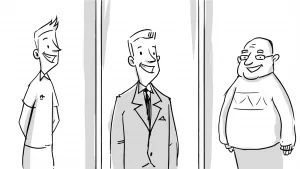Why employee ownership should be on every family business succession planning agenda
Family businesses in the UK come in all sizes, from all sectors, and are based all over the country. Some have been operating for hundreds of years and are deeply embedded in their communities. Others are first generation businesses with much of their story ahead of them. All face the same challenge when the current stewards near retirement age. Can they keep the business in the family?
We think the answer is yes, even if there isn’t an obvious willing family successor. Exiting family business owners should consider keeping the business in their extended business family – the one made up of their employees.
Family business owners will often have spent their entire careers nurturing and growing a business that reflects the family’s values, and they rightly want to protect and extend that legacy. They may have been aided by the hard work and commitment of both family and non-family employees and will be motivated to protect the workers and communities that have contributed to business sustainability and success. Collective stewardship, responsible risk-taking and a focus on long-term business goals are typically central to the operations of such businesses.
Keeping it in the family
Model 1: ‘Recycling dad’
A senior generation business owner and leader has nurtured and mentored a successor to ‘step into dad’s shoes’ when he retires. Ownership and leadership of the business is transferred to the successor and business and governance practices are recycled from the previous generation. The status quo is maintained. But what if no one is willing or able to step into dad’s shoes?
Where there are relatives willing and able to take on all or some of the responsibilities of the exiting owners, the following three models are often considered first.
Every business family is unique, as are the operational and governance needs of their businesses. This brief overview explores some of the options that should be on the family table.

Model 2: Next generation ownership and management
When members of the next generation are ready to take over ownership and management of the business, the work is around harnessing talent and designing a system of governance that will allow the business to thrive with new family owners at the helm. However, being related doesn’t necessarily mean that people have a shared flair or appetite for the family business.
Model 3: Active next generation owners and non-family management
When next generation family members do not wish to be owner-managers of the family business, systems of governance can be designed that allow the family to continue as active shareholders with a non-family board running the business on the family shareholders’ behalf.
The difficulty in this model is striking the correct balance within the governance structures. If the shareholders are overly involved in decision making, then the board may be paralysed and the business suffers. If the shareholders are disengaged, the family begins to lose touch with its legacy business.
Outside the family
What are the options if family members don’t wish to take on senior management and/ or active ownership roles in the family business when the senior generation is ready to retire?
Model 4: Trade sale/ private equity investor
By selling to a third-party buyer, a family can realise its investment and use the sale proceeds to invest in other assets. One way they may choose to continue the family legacy is to purchase other assets jointly and run them collectively for the family’s benefit, perhaps in a family office. The “emotional glue” that keeps the family together is no longer focused on the original operating business but on the collective ownership of other assets.
In this model the family no longer has influence over the direction and sustainability of the business. The business legacy may be eroded as decisions that have an impact on the community and jobs like closing down, diversifying the business or relocating are in the hands of an independent third party.

Model 5: Management Buy Out
The senior management team buys the family’s shares. The precondition here is that there is a non-family management team to buy the shares. If the correct management team is in place to take over running the business, employment and sustainability are secured. Using this structure, the management team will have to bear the financial burden of the transaction. They will need to have cash to invest in the business to buy out the family and will have to give guarantees to lenders and the exiting family shareholders that any deferred consideration will be paid.
Access to capital may be an issue in this model and the management team will have to take on personal financial risk. However, accepting the financial risk of the MBO rewards the new manager-owners as core financial drivers of the business going forward. The MBO team will face its own succession challenge in the future. Can the business sustain another management buyout when the manager-owners are ready to retire?

Extended business family: Shining a lens on an innovative alternative
Model 6: Employee Ownership
Employee ownership is where all employees have a significant and meaningful stake in a business. This means that some or all of the ownership is transferred to employees. The employee ownership model is established around a number of clear principles and choice of structures that have the flexibility to suit the circumstances of most businesses.
Introducing non-family owners is a big step for any family business but unlike other non-family ownership options, employee ownership allows the unique culture, vision and values of the family business to be preserved. The new non-family owners have worked in the business – often for many years – where the culture is entrenched. Commitment to employees and the local community is preserved and contractor and supplier relationships are protected.
6.a) Creating liquidity with minority employee ownership stake
In this model, majority ownership is retained by the family and a minority stake is transferred to non-family employees. This allows the family to unlock some wealth tied up in the business and recognise the contribution of non-family employees while retaining the legacy of family ownership of the family .
6.b) 100% employee owned

In a move to full employee ownership the family sells its shares and extracts its wealth. Perhaps the “emotional glue” is maintained via collective family ownership of other assets, and the business legacy of independence and sustainability continues without family involvement.
The transition to 100% employee ownership can be structured in a number of ways. 100% of the family’s shares can be sold at once or share transfers can take place over time. They can be transferred to non-family employees individually (direct employee ownership) or into a trust which will hold the shares for the benefit of all the employees (indirect employee ownership). It is also possible to use a blend of the two.
In the direct ownership model, employees become individual shareholders in their companies. Shares are usually acquired using a share scheme. There are a number of different schemes with different tax advantages. As direct shareholders, employees can therefore influence the direction of the company and can benefit financially as the company grows. Most companies oblige shareholders to sell their shares when they are no longer employees of the business.
Indirect ownership is when all or some of the shares are held collectively for the benefit of all the company’s employees, usually using an employee ownership trust (EOT). The EOT model gives employees many of the benefits of ownership without them being obliged to buy shares directly from their own cash. If done properly, an EOT is a tax efficient structure. For example, if an EOT purchases a majority stake in a company the payments to the existing owners will receive 50% capital gains tax relief and employees can benefit from an annual income tax free bonus of up to £3,600 but not NICs.
The EOT is usually intended to be the long-term custodian of ownership in the structure. Where a family business sells to an EOT, continued family representation can be built into the structure. For example, the family may be able to appoint one or more of the trustees of the EOT for a period of time, or, in some cases, in perpetuity.
Many companies find that a blended model offers the best solution. The majority of shares will usually be held in an EOT to provide stability for the company and some of the remaining shares will be made available to employees. In this model, individual shareholders may have voting rights within the governance of the business and can have additional financial benefits such as income from dividends and capital gains if they sell their shares at a profit.
6.c) Combination approach with retained family ownership
In this model, the majority of the family’s shares are transferred to employees directly or to an employee ownership trust and a minority of family ownership is retained. This allows the family to continue to participate in decision making, remain custodians of the business and get cash out of the business for their retirement. Employees are given the opportunity to participate in and benefit from the success of the business, but the family has a say over the things that really matter to it.
What are your next steps?
Succession is inevitable, but it’s surprising how many people put off thinking about it until very late in the day. With so many family businesses facing transitions over the next year, it’s essential they know all the succession options, so they find the best way forward for themselves, their communities, and the UK economy.
You may find your ideal succession solution is a lot closer than you thought.